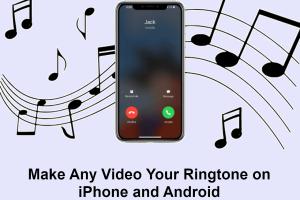Ultimate Guide to Crafting Custom Ringtones for iPhone: Step-by-Step Techniques

-
Quick Links:
- 1. Introduction
- 2. Why Create Custom Ringtones?
- 3. Tools Needed
- 4. Creating Your Ringtone
- 5. Using iTunes to Sync Ringtones
- 6. Using Third-Party Apps
- 7. Common Mistakes to Avoid
- 8. Expert Tips for the Best Ringtones
- 9. Case Studies: Unique Ringtones People Love
- 10. The Future of Ringtones
- 11. FAQs
1. Introduction
Ringtones have evolved from simple beeps and dings to personalized soundscapes that reflect our individuality. With the iPhone, creating a custom ringtone is not only a fun project but also a way to express your personality. In this comprehensive guide, we will explore the various methods to create ringtones for your iPhone, ensuring you have a unique sound for every contact.
2. Why Create Custom Ringtones?
Custom ringtones serve numerous purposes:
- Personalization: Stand out with a ringtone that reflects your style.
- Identification: Know who’s calling without looking at your phone.
- Fun Factor: Enjoy fun or nostalgic sounds that bring joy.
3. Tools Needed
Before diving into the ringtone creation process, gather the following tools:
- Computer: For editing audio files.
- iTunes: For syncing ringtones to your iPhone.
- Audio Editing Software: Such as GarageBand, Audacity, or online tools like Ringtone Maker.
- Music Files: Songs or audio clips from which to create ringtones.
4. Creating Your Ringtone
Here’s a step-by-step guide on how to create your custom ringtone:
Step 1: Choose Your Audio File
Select a song or sound clip you want to turn into a ringtone. Ensure you have the legal right to use the audio.
Step 2: Edit the Audio File
Using audio editing software:
- Open the audio file.
- Trim the clip to the desired length (typically 30 seconds).
- Adjust volume levels and fade in/out effects if desired.
- Export the audio in a compatible format (M4A or MP3).
Step 3: Convert to Ringtone Format
iPhones require ringtones to be in M4R format. Most audio editing software will allow you to convert or save the file in this format.
5. Using iTunes to Sync Ringtones
Once your ringtone is ready, it’s time to transfer it to your iPhone:
- Open iTunes on your computer.
- Connect your iPhone using a USB cable.
- Drag and drop the M4R file into the “Tones” section of your iTunes.
- Sync your iPhone to transfer the ringtone.
6. Using Third-Party Apps
If you prefer a simpler method, numerous apps are available to create ringtones directly on your iPhone:
- Ringtone Maker: User-friendly app for creating and sharing ringtones.
- GarageBand: A powerful audio editing app that allows for detailed customization.
7. Common Mistakes to Avoid
Here are some common pitfalls to watch out for:
- Choosing a clip that is too long; keep it under 30 seconds.
- Using copyrighted music without permission.
- Forgetting to convert to M4R format before syncing.
8. Expert Tips for the Best Ringtones
To make the most out of your ringtone creation, consider these expert insights:
- Opt for recognizable hooks or lyrics that stand out.
- Experiment with effects for a professional sound.
- Regularly update your ringtones to keep things fresh.
9. Case Studies: Unique Ringtones People Love
Here we showcase some popular custom ringtones among users:
Case Study 1: The Nostalgic Classic
A user created a ringtone from their favorite childhood cartoon, which not only brings back fond memories but also becomes a conversation starter.
Case Study 2: The Personal Touch
A couple created ringtones from their wedding song, allowing them to relive their special day every time the phone rings.
10. The Future of Ringtones
As technology advances, the way we create and use ringtones is also evolving. New formats, customizable soundscapes, and AI-generated audio are shaping the future of ringtones, allowing users to explore endless possibilities.
11. FAQs
1. Can I use any song for my ringtone?
No, ensure you have the legal rights to use the song.
2. What is the maximum length for an iPhone ringtone?
Ringtones should be under 30 seconds long.
3. How do I transfer ringtones to my iPhone without iTunes?
You can use third-party apps like GarageBand or Ringtone Maker.
4. What format do I need for ringtones on iPhone?
Ringtones must be in M4R format.
5. Can I create ringtones directly on my iPhone?
Yes, using apps like GarageBand allows for ringtone creation directly on the device.
6. How do I delete a ringtone from my iPhone?
You can remove ringtones via the “Tones” section in iTunes or directly on the iPhone settings.
7. Are there free tools for making ringtones?
Yes, tools like Audacity and online ringtone makers are available for free.
8. Can I make ringtones from YouTube videos?
Yes, but ensure you are using legal methods to download and edit the audio.
9. Is it possible to use voice recordings as ringtones?
Absolutely! You can create ringtones from personal voice recordings.
10. Do I need a computer to create ringtones?
No, you can use apps on your iPhone to create ringtones without a computer.
Conclusion
Creating custom ringtones for your iPhone is a fulfilling project that lets you express your individuality. With the right tools and techniques, you can easily craft unique sounds that add a personal touch to your device. Whether you prefer using iTunes, third-party apps, or audio editing software, the possibilities are endless. Embrace your creativity and start making custom ringtones today!